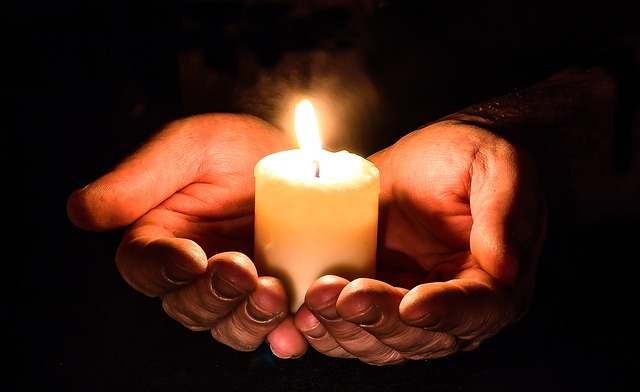It is an easy enough phrase to repeat; our thoughts and prayers go out to… In the aftermath of many disasters, there is an armada of people who want to express this sentiment. And, for the record, it is entirely appropriate. For sure, our thoughts and prayers should go out to the family and friends of people who die as part of a preventable tragedy. I am sitting at my desk right now reading about one where 36 human beings lost their lives in a building fire.
However, I am moved to draw an entirely different observation based on the official reporting on the fire. I would like to suggest that our thoughts and prayers ought to go out to the firefighters who had the onerous task of finding those 36 bodies. No one ever joined a fire department to engage in recovery efforts. We like to think in terms of rescue. While I have not interviewed any of the firefighters of this particular incident, I can’t help but believe that the task of finding bodies falls short of the firefighter’s heroic effort to rescue the occupants before they become casualties.
What thoughts should we be putting forward? Already the media is looking for someone to blame for the fire. One lead paragraph notes that “as criminal investigators begin to examine who is to blame for one of the worst fires in modern California history, …” One of the key thoughts that the local jurisdiction must entertain is what they could have done to have prevented the fire in the first place? Therefore one of the thoughts that comes to the forefront is what does the departments documented evidence look like? With respect to a prayer, we can only hope that the department has documented the occupancy as complaints occurred and the remedial actions that have been pursued prior to the event.
Another news account asks a rhetorical question, of “why weren’t there sprinklers in this building?” My first thought is that anybody who would try to put sprinklers in that building because of fire protection concerns would face an unreasonable and undeniably emotional rejection of a retrofit sprinkler system. How many newspapers have lined themselves up to be an advocate of sprinkler systems? Why are they surprised when there are no sprinklers, when very few of them will come out in support of sprinklers?
A fire marshal puts his or her career in jeopardy the minute that they start proposing retrofit sprinklers. Regardless of large loss of life fires like this, contemporary reaction to retrofit sprinklers is that it is overkill and unreasonable. Tell that to the survivors and the family and friends of the victims of this most recent episode. The thought I would share at this point is that fire sprinklers are one of the most positive means of limiting fire loss that we have in our entire arsenal of fire defense.
In addition, the thought that I would like to propose that needs to go out is the fact that sprinkler systems are not unreasonable when you consider the consequence of loss of life. The newspaper article also noted that there were no fire alarms in the building. The same thought applies. Putting in fire alarms is a passive process but it could have given some of the victims at least a fighting chance to survive.
The newspaper articles are riddled with criticism that city officials had not adequately addressed numerous complaints about the structure. My thought to go out to the officials is that I hope they have taken such complaints seriously and have treated the complaint in an objective manner. I can only hope that it has been adequately documented and records kept of when the complaint was received and what course of action officials took.
As mentioned in the opening of this column, there will be a lot of sympathy given to the survivors and family and friends. Don’t expect there to be much empathy for government officials with regard to what they did or did not do. Instead a phalanx of attorneys will arrive at City Hall prepared to assign blame as well as joint and several liability. The thoughts that need to go out to those who will be responding to these issues are multi-faceted and complex. Just as important, a thought needs to go out to everyone in the code enforcement community. As an adequate defense one must have documentation and proof that you have attempted to reconcile the problem.
Fires of this magnitude often create instantaneous emotion in the headlines. Whereas the answer to the question of whether the fire was preventable, may be lost in obscurity years down the road. Again, my thoughts go to the code official. It is this type of an incident that is a harbinger of things to come. Those that were not directly impacted by this incident but who have similar issues in their community had better be planning a program to bring the situation back under control.
This has often been called a catastrophic area of reform. In the aftermath of many serious fires, there have been community efforts to improve upon fire and life safety regulation. A good example of this might be the Coconut Grove fire or the Hartford, Connecticut Circus tent fire. Politicians can easily resist our remedy when nothing has actually happened, but they seldom have the ability to resist catastrophic areas of reform.
In summary, my thoughts go out to every Authority Having Jurisdiction that they should not be caught unaware of these tragic conditions. You do not want to find out at 3 o’clock in the morning that dozens of your citizens have died an unnecessary death. My final thought is that I hope that those witnessing this type of event will start developing a risk inventory that identifies such conditions. My hope is that our political leadership will begin to recognize the validity of proactive fire protection and back up the Authority Having Jurisdiction that is responsible to establish fire and life safety within the community.
Remember that having sprinklers in place no matter how they are justified means never having to say “I’m sorry.”
 ABOUT THE AUTHOR: Ronny J. Coleman is currently the president of Fireforceone. He is a past president of the IAFC and CFAI. Over his lifetime, he has received numerous awards including the AFSA’s 1989 Henry S. Parmelee Award, the 2011 Mason Lankford Award from the Congressional Fire Services Institute, and the Tom Brennan Lifetime Achievement Award from Fire Engineering in 2014. He continues as a contributor to the fire service in many ways.
ABOUT THE AUTHOR: Ronny J. Coleman is currently the president of Fireforceone. He is a past president of the IAFC and CFAI. Over his lifetime, he has received numerous awards including the AFSA’s 1989 Henry S. Parmelee Award, the 2011 Mason Lankford Award from the Congressional Fire Services Institute, and the Tom Brennan Lifetime Achievement Award from Fire Engineering in 2014. He continues as a contributor to the fire service in many ways.
 Sprinkler Age A Publication of the American Fire Sprinkler Association
Sprinkler Age A Publication of the American Fire Sprinkler Association

